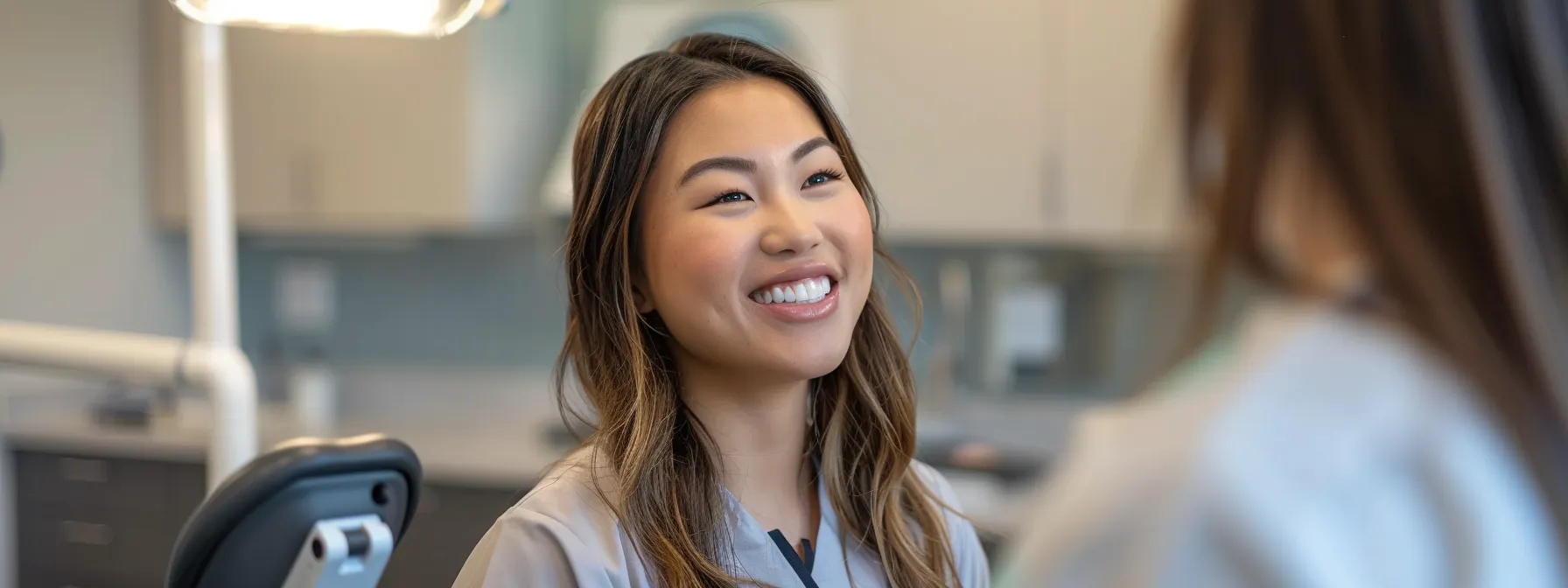It is essential to integrate dental check-ups into children’s healthcare routines to identify pediatric sleep apnea (PSA) early. Pediatric dentists, due to their training in oral structures, are often the first professionals to spot indicators of PSA before symptoms become more severe.
These dental professionals look for signs like jaw structure abnormalities, teeth misalignment, or enlarged tonsils. These indicators can serve as early warnings, prompting referrals to sleep specialists for further evaluation. When caught early, PSA can be managed effectively through collaborative care.
Understanding what dentists observe during evaluations helps clarify their critical role:
- Jaw Structure Assessment: Dentists evaluate for narrow or receding jaws that might restrict the airway.
- Teeth Alignment Evaluation: Misaligned or crowded teeth can signal insufficient jaw development.
- Tonsil Size Observation: Enlarged tonsils are often missed during general exams but can obstruct breathing.
- Oral Breathing Patterns: Persistent mouth breathing may be a sign of airway restrictions.
These signs are often subtle, but their detection can lead to early interventions that significantly improve a child’s quality of life. Addressing oral and airway development proactively may prevent more invasive treatments down the line.
Behavioral Symptoms Often Misunderstood
Pediatric sleep apnea is frequently overlooked in children because its symptoms mimic behavioral conditions like ADHD. It is important for parents and healthcare providers to recognize the behavioral impact of untreated PSA.
Children suffering from PSA may struggle with concentration, experience frequent irritability, or display hyperactivity. These symptoms are often misattributed to discipline issues or learning disabilities. However, they may stem from disrupted sleep cycles.
Daytime sleepiness, often mistaken for laziness or a lack of motivation, is another key symptom. Without proper rest, children may find it difficult to stay awake and alert in class or social settings. This fatigue can significantly impact school performance and interpersonal relationships.
Misdiagnosing PSA as a behavioral disorder can delay effective treatment. Recognizing the underlying cause allows for targeted interventions that address both the sleep disorder and its outward manifestations, improving long-term outcomes for the child.
Assessment Tools for Silent Symptoms
Not all children exhibit obvious signs of sleep apnea. For these cases, structured tools like the Pediatric Sleep Questionnaire offer valuable insight into symptoms that might otherwise go unnoticed.
These tools guide parents to reflect on subtle behaviors, such as restless sleep or habitual mouth breathing. By gathering these observations, dental professionals gain a clearer understanding of the child’s sleep quality and risk factors for PSA.
Some silent symptoms include narrow palates or slight swallowing issues. These may be missed during routine pediatric visits but can be significant when considered alongside other indicators. Questionnaires help bridge the gap between clinical exams and real-life behaviors.
Using structured screening tools allows dentists to build a comprehensive picture of a child’s sleep health. This early detection can initiate timely referrals and collaborative treatment planning.
Customized Treatment Plans for PSA
Once PSA is suspected, tailoring a treatment plan to the child’s unique needs is essential. Dental observations, behavioral symptoms, and clinical tests all play a role in forming a holistic treatment strategy.
Dentists often work alongside sleep specialists to confirm diagnoses through sleep studies. Polysomnography provides a detailed picture of how PSA affects the child’s rest, guiding appropriate interventions.
These customized treatment plans often include:
- Comprehensive Sleep Studies: Polysomnography evaluates breathing patterns and sleep stages.
- Severity Assessment: Results determine the seriousness of the condition and needed treatment.
- Conservative Options: Mild cases may benefit from lifestyle changes or Oral Appliance Therapy.
- Intensive Treatments: More severe cases might require CPAP or surgical procedures.
By individualizing care, providers ensure that each child receives the most effective and least invasive treatment possible. Collaboration between specialties creates a seamless care experience for families.
When Symptoms Require Immediate Action
Some symptoms of PSA are more urgent and warrant immediate dental or medical attention. Recognizing these red flags can prevent further complications and expedite treatment.
Snoring accompanied by signs like nighttime gasping or chronic bedwetting should be investigated promptly. These are not benign behaviors and may indicate significant breathing interruptions during sleep.
When dental professionals notice such signs, they assess the severity and frequency, determining whether immediate intervention is needed. This may involve initiating treatment or coordinating with other specialists for advanced care.
Rapid identification and response to severe symptoms provide a better prognosis. Early treatment can reduce the long-term impact of PSA on a child’s development and overall well-being.

Education and Training for Dental Professionals
Dental professionals play a pivotal role in recognizing pediatric sleep apnea, but they must be equipped with proper education and tools. Specialized training ensures they can identify signs of PSA and coordinate care confidently.
Educational programs expand dentists’ understanding of sleep disorders beyond the basics. With this knowledge, they can interpret symptoms, explain risks to families, and recommend next steps with authority.
Multidisciplinary training brings together dental teams with sleep specialists, ENT physicians, and other providers. This collaboration ensures that care recommendations are aligned across disciplines.
Ongoing education fosters a more informed and proactive dental community. Equipped with current research and protocols, providers can effectively guide families through the PSA care process.
Ongoing Monitoring and Preventive Care
Regular dental evaluations are key to preventing the escalation of PSA. Dentists are in a unique position to monitor developmental changes that may signal evolving risks.
Through consistent check-ups, dental teams can track oral growth patterns, evaluate tonsil size, and assess jaw development. These periodic evaluations enable the early detection of subtle changes that could lead to PSA.
Preventive efforts are most successful when healthcare teams collaborate. Dentists, physicians, and sleep specialists should share insights to ensure the child’s airway and sleep quality are continuously supported.
Proactive monitoring promotes healthier development and minimizes the need for future interventions. Families benefit from peace of mind, knowing their child’s sleep health is being safeguarded by a coordinated team.
Protecting Children’s Health Through Early Recognition
Early identification of pediatric sleep apnea is vital for protecting a child’s mental, emotional, and physical development. Dentists serve as an essential first point of contact in recognizing the condition during routine exams.
By noting signs like snoring or interrupted breathing, dental professionals can initiate further assessment and referrals. Their role is instrumental in ensuring that children receive appropriate care before symptoms worsen.
Ohl Practice Management & Consulting supports dental teams in advancing their knowledge of pediatric sleep disorders. Through targeted training and consulting, we empower dental professionals to detect, screen, and refer children for timely care.
Early intervention offers children the best chance for healthy development. Education ensures that dental professionals are confident and well-prepared to fulfill their role in this critical area of pediatric healthcare.
Don’t let uncertainty hold you back. Schedule a consultation today and start building a thriving dental sleep practice with Ohl Consulting!
Ohl Practice Management & Consulting
connect@ohlpracticeconsulting.com
Frequently Asked Questions
What are common signs of sleep apnea in children?
Common signs include snoring, daytime sleepiness, hyperactivity, and inattention. If your child exhibits these behaviors, consider having them evaluated by a pediatric dentist who can identify any oral indicators of sleep apnea.
How can a dentist help with my child’s sleep apnea?
Dentists play a key role in spotting early signs of sleep apnea through examination of your child’s jaw structure and teeth alignment. They can provide referrals to sleep specialists for a comprehensive treatment plan.
Is sleep apnea in children treatable?
Yes, pediatric sleep apnea is treatable. The approach may vary based on severity but can include treatments like Oral Appliance Therapy or referrals to a sleep specialist for further intervention. Early detection is important for effective treatment.





